“If more people follow their superpowers– and everyone has one– then we’re going to be better as a society” (Adam Neumann, founder of WeWork, in Time magazine, 2016).
Try this inspiring, interdisciplinary culminating project that works well with students at any grade level. Since kids of all ages are obsessed with superheroes, channel their natural interests into practical ways children can exemplify noble qualities that not only benefit themselves but others.
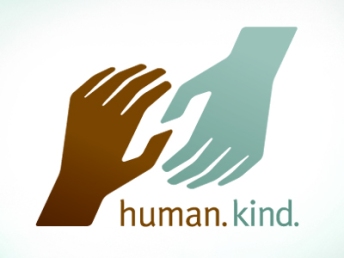
Providing Exemplars
As I write in my book, Reaching the Whole Child by Teaching Whole-Class Novels, it helps to begin the school year with a list that provides examples of what everyday people do to improve themselves and their surroundings. Use the following list for students to identify positive, productive qualities in literary characters, as well as the change makers of history, science, math, sports, and the arts.
Be sure to add to this list throughout the school year, as more heroic qualities are found and while students learn about the famous and not-so-famous folk who populate your subject area. It is okay to also point out the flaws and bad decisions these people make because no one is, or must be, perfect. In fact, life and literature are filled with those who made mistakes and experienced misfortune. Nevertheless, these heroes eventually redeemed themselves and overcame obstacles so they could both better themselves and the world.

The Growth and Benefit Mindsets
Self-improvement achieved through self-belief and strategic effort is at the heart of growth mindset. This sort of personal advancement is only a first step, however, as you teach your students the importance of combining a growth mindset with the concept called the benefit mindset.

According to Ash Buchanan, “There is a global movement taking place in education, business, and sustainability. An emerging community of people who share a common belief. Rather than being driven by individual gain, this emerging community of people are finding that there is real value, in being of value—to ourselves, to others, to nature, and to the future.” The benefit mindset is the natural extension of a growth mindset.
The Heroic Qualities of a Growth Mindset and Benefit Mindset

Leadership’s Social Contribution
Stewardship of people and planet: set an example, act as a role model, preserve and protect the natural world, treat animals humanely
Service to others: help out, volunteer, practice generosity of time and resources
Self-awareness: practice mindfulness, self-discipline, and self-reflection
Steadfastness: earn and maintain a good reputation; exemplify trustworthiness, reliability, and responsibility; honor commitments; keep promises
Synergy: personify nonviolence, respect, patience, calm, and cooperation; build bridges; play fairly
Solutions: apologize, forgive, make amends, find connections and common ground, think win-win, seek justice and equity

Love’s Emotional Advantage
Empathy: embody kindness, consideration, concern, and understanding; put yourself in others’ shoes
Inclusion: embrace tolerance; celebrate difference; honor individuality; offer welcome; demonstrate acceptance, warmth, and courtesy
Encouragement: provide support, cheer, and reassurance; be calming and consoling
Interaction: communicate, let people in, actively listen
Openness: practice sincerity and honesty, express your feelings
Affection: extend friendship, display loyalty, exhibit faithfulness, show devotion, offer trust, act with love and tenderness
Attention: embrace sensitivity, be attuned to others’ needs, make yourself accessible
Optimism: search for the positive, cling to hope, look on the bright side
Assurance: display confidence and humility, advocate for yourself, speak up

Laughter’s Soulful Legacy
Passion: pursue aspirations; express enthusiasm and ambition; practice authenticity; share your dreams, desires, and delights, follow your heart
Play: value experiences over things, revel in wonder, embrace adventure, commune with nature, explore, experiment, inspire, laugh out loud and often
Panache: make art, create beauty, pursue creativity, flaunt your personal style
Pluck: try new things, trust your instincts, exhibit bravery and gallantry, live your convictions, go against the crowd, stand up for what is right
Purpose: search for meaning, honor the past, live in the present
Profundity: look below the surface, slow down, savor the moment, embrace mystery and the unknown, reveal interconnectedness
Praise: practice gratitude, appreciate others

Learning’s Intellectual and Practical Value
Wisdom: learn from mistakes, keep improving and refining
Well-Read and Well-Informed: know history, keep up with current events, think critically, ask questions, fall in love with reading
With It-ness: invest in preparation and organization, plan ahead, exercise caution, identify and access resources, ask for assistance and opinions
Work: become a self-starter, practice diligence, honor duty, take pride in a job well done, employ calculated effort to work smarter rather than harder
Willpower: develop drive, determination, and dedication; expect struggles, stumbles, and setbacks; embrace challenge
Weathering Storms: cultivate resilience, bounce back from mistakes and bad luck

Taking Character Education from Awareness to Action
After spending the school year identifying and discussing the positive traits of others, students focus on how they themselves can exemplify similar heroic qualities. Students create an avatar (something visual used to also represent non-visual concepts or ideas) for themselves that they will call their Super-Ordinary Hero.

Each student decides how to bring their hero “to life.” In order to represent their heroic self, students may choose to make a poster, a large doll, a booklet, a diorama, a mobile, a comic book, a film (live-action or animated), a multimedia presentation, etc. Creativity and originality are part of the fun!
The following items are some of the components you can require your students to include in their project. Feel free to add to this basic list. Remind students that the hero they create is an amalgamation of not only who they currently are but who they aspire to be.
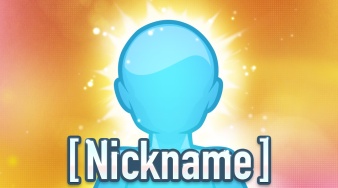
Heroic Nickname:
Every superhero needs a special name, so students create an appropriate name that broadly defines all the good they do for themselves and others. Students may use alliteration for their heroic name.
My heroic nickname would be The Fascinating Philosopher because I enjoy sharing the wisdom I have learned with my students, as well as learning the insights and opinions they have discovered.
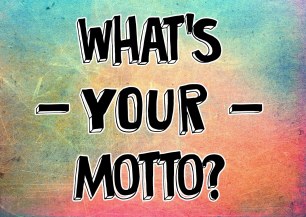
Motto:
Maybe we cannot leap tall buildings in a single bound, but an inspiring rallying cry, slogan, or catchphrase succinctly captures a hero’s main objectives or assets. Students create a motto that gives their life direction and purpose.
My heroic motto would be: “With a great book in hand, the Fascinating Philosopher influences the future by touching hearts and awakening minds.”

Outfit:
Even though the point is for students to rouse the everyday hero inside of them, every superhero needs a special get up or costume to show the world exactly what they stand for. Have students draw, dress, or delineate their noble garb.
My heroic outfit would definitely have a cape made from the repurposed pages of the beloved books that have naturally fallen apart at the hands of scores of eager student readers.

Symbol:
Whether this visual representation of each student’s heroism is emblazoned on their outfit or it decorates their shield, cape, or headgear, this insignia must encapsulate who each student strives to be. Students also write a short explanation for their symbol.
My heroic symbol would be an apple tree because this represents teaching, growth, deep roots, nature, and knowledge.

Gear:
Please emphasize peace and positivity as students select their heroic accouterments. Weapons and items of violence and destruction have no place in this project. Super-Ordinary Heroes are defenders of justice and champions of kindness, who are less interested in battling evil and more intent on spreading goodwill and doing good deeds.
My hero’s gear would consist of my trusty handkerchief to dry my eyes when something especially moving happens in my classroom, my reading glasses so I can respond to my students’ remarkable writing, and my wristwatch so I can monitor the pace and flow of each engaging lesson.
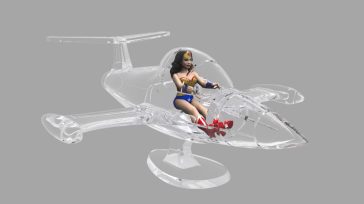
Vehicle:
Every hero has their favored mode of transportation, preferably one that is eco-friendly. Students not only draw or describe their vehicle, they also create a personalized license plate that consists of up to eight letters or numbers.
My hero’s vehicle would be my wheeled desk chair that enables me to roll from student to student and to converse with them at their level. My chair’s license plate would read: EYE2EYE.

Headquarters:
Students create a home base for their hero. Whether it is their current bedroom or the home of their dreams, students must show or describe the environment that enables them to reflect, recharge, and recreate.
My heroic headquarters is my fantasy classroom with large, sunny windows that look out upon a thriving student garden.
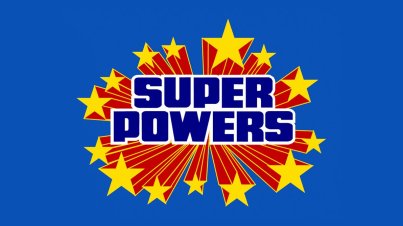
Super-Ordinary Powers:
While aspects of these heroic personas are aspirational, they are also grounded firmly in the real world. Students use the heroic qualities from the preceding list (augmented by their own ideas and those added to the classroom master list) to select their top three choices from each of the four categories above: Leadership, Love, Laughter, and Learning.
Students may feature more than three heroic characteristics for each category, but don’t let them get hung up on having to do it all. Every impact matters—and matters more than we may ever know. Students must also explain why each quality is personally meaningful, as well as how they plan to exemplify or implement this quality in the future.
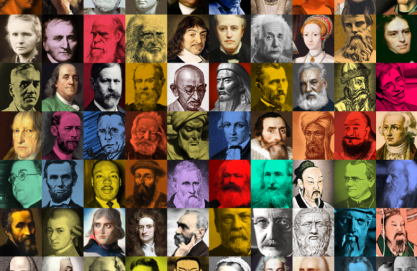
Influential Actions:
This is where students take what they have learned in all of their classes and specifically recount the gallant deeds of the people from history, science, mathematics, etc. Students should compose at least four short narratives that describe the caring, courageous actions of the people they have been studying and who they most admire.

Words of Wisdom:
Students directly quote the words and writing of the people they have learned about. These can be short quotations from the same people whose influential actions were related above, or they can be from additional people from this year’s lessons.
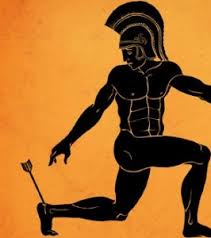
Achilles Heel/Kryptonite:
We all have our flaws, our weaknesses, and our lapses. It is important to be aware of our foibles so that we do not become our own worst enemy or inadvertently hurt others. Students self-reflect and honestly explain their three greatest shortcomings or temptations that sometimes get in the way of being their best.
One of my Achilles heels is imbalance. As long as I equally attend to my students’ social, emotional, soulful, and academic needs, they will move forward. I also must steer clear of giving up on any student, especially when they have already given up on themselves. In addition, haste always makes waste in a classroom, and I must honor process and progress just as much as product.
***
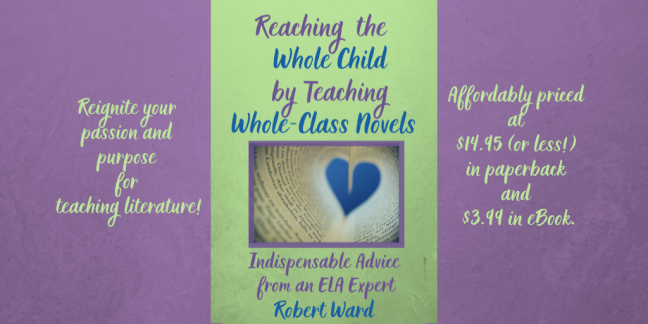
If you liked this article, you’ll love my new book, Reaching the Whole Child by Teaching Whole-Class Novels. It’s my love letter to ELA teachers who want to teach with equal parts practicality and passion!

Teaching the Benefit Mindset is Amazon’s #1 New Release in Experimental Teaching Methods! You can read more about this inspiring and practical new book here.

This article is a companion to my Edutopia article “Exploring the Benefit Mindset.”
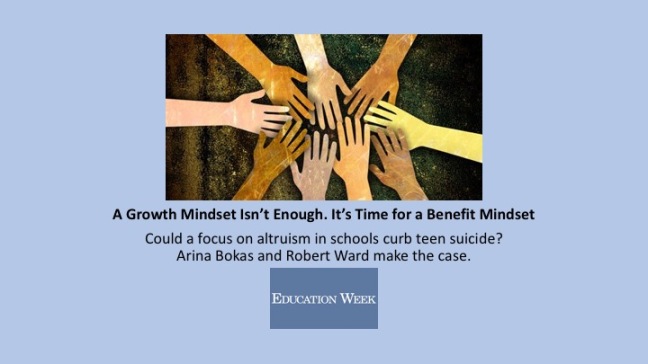
Also read this Education Week commentary that I co-authored, “A Growth Mindset Isn’t Enough. It’s Time for a Benefit Mindset.”

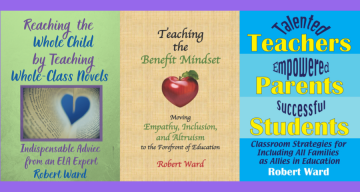

LikeLike
LikeLike
https://twitter.com/valerietilton/status/937866278848647168
LikeLike
LikeLike
LikeLike
LikeLike
LikeLike
LikeLike
LikeLike
LikeLike
LikeLike
LikeLike
LikeLike
LikeLike
LikeLike
LikeLike
LikeLike
LikeLike
This is fantastic! Thank you! I am adapting this to use with my freshmen, as we just finished reading “The Odyssey,” and I wanted to do something relating to their own lives as the culminating project.
LikeLike
Thank you for your kind comment, Karen. I’d love to hear how this project goes!
LikeLike
Hi nice reaading your post
LikeLike